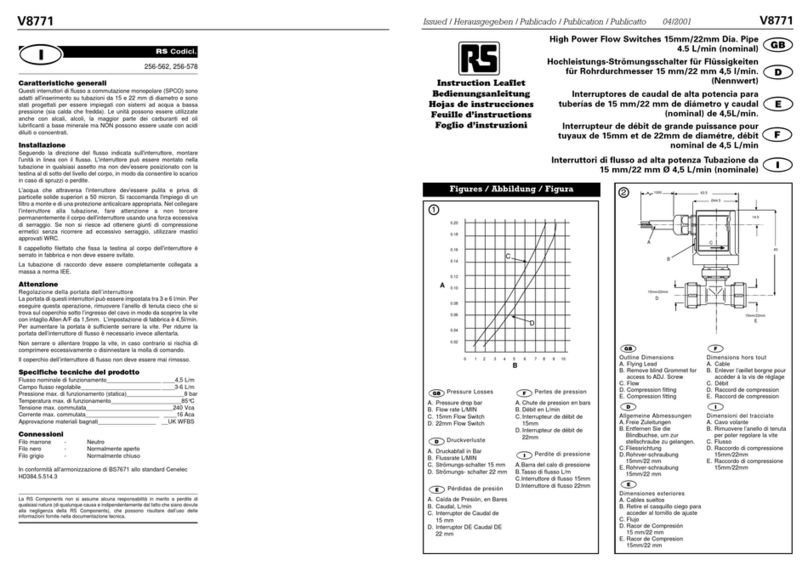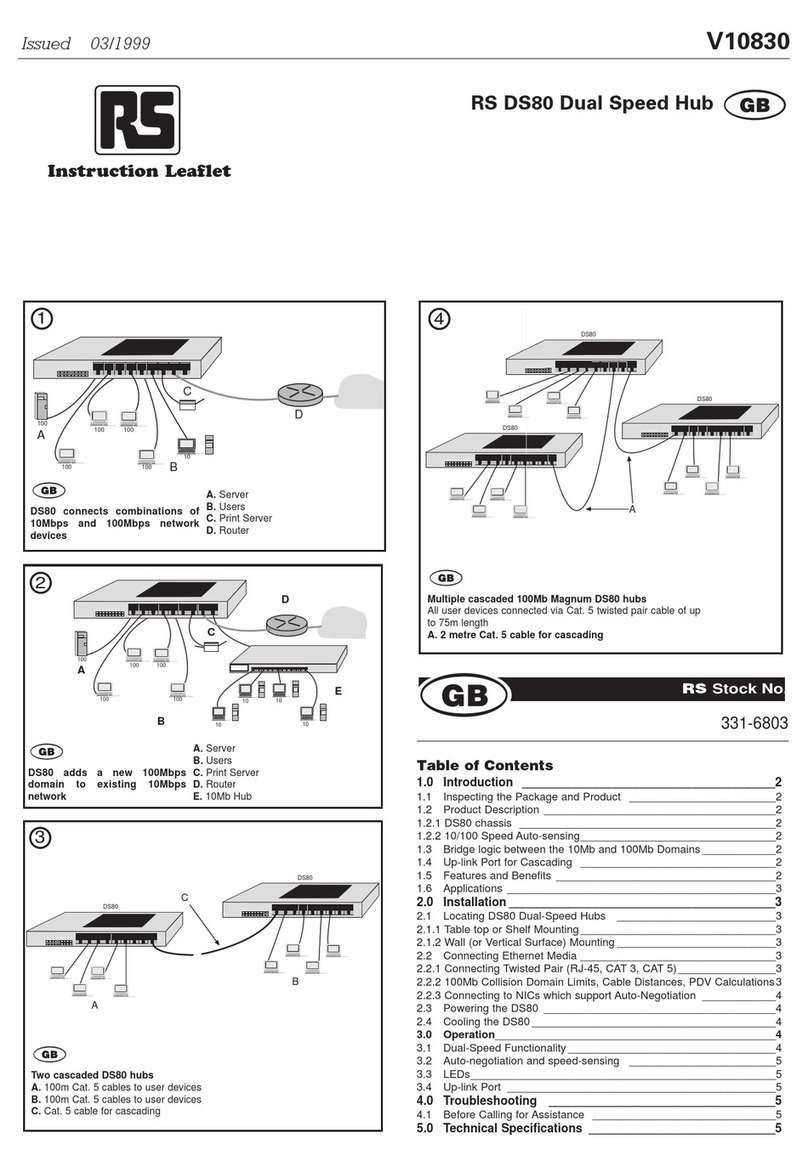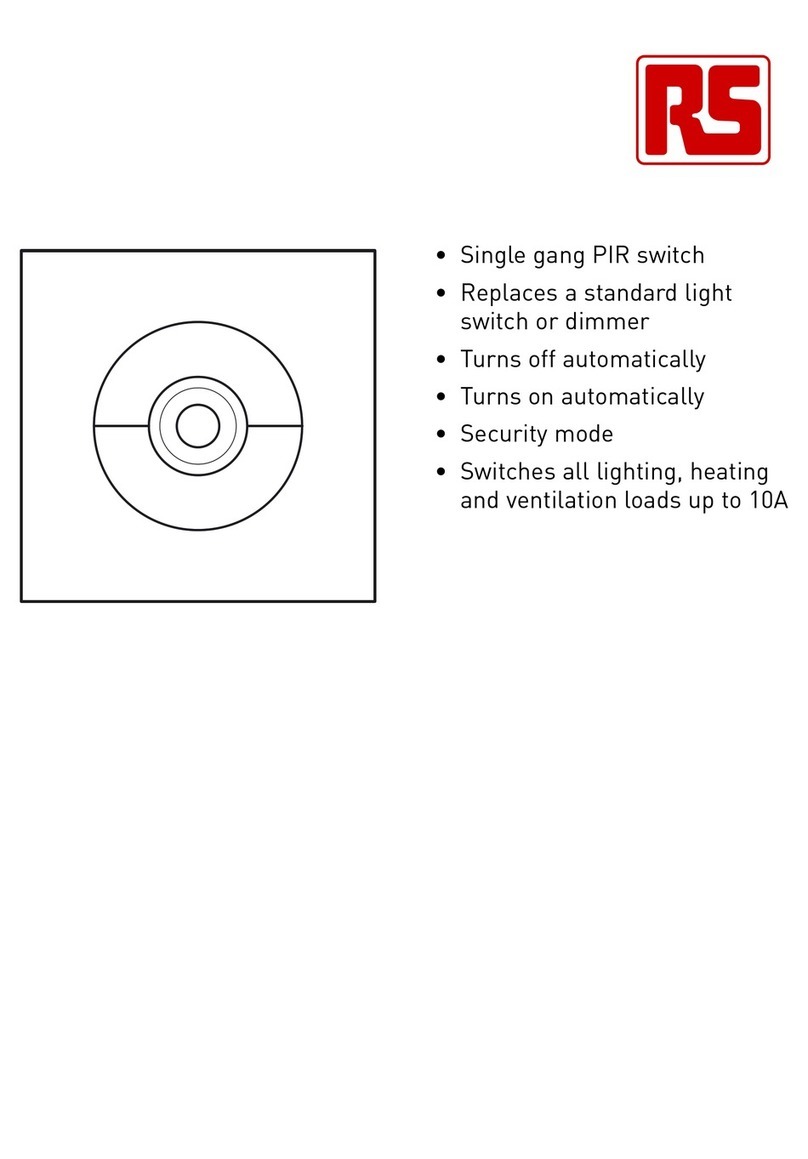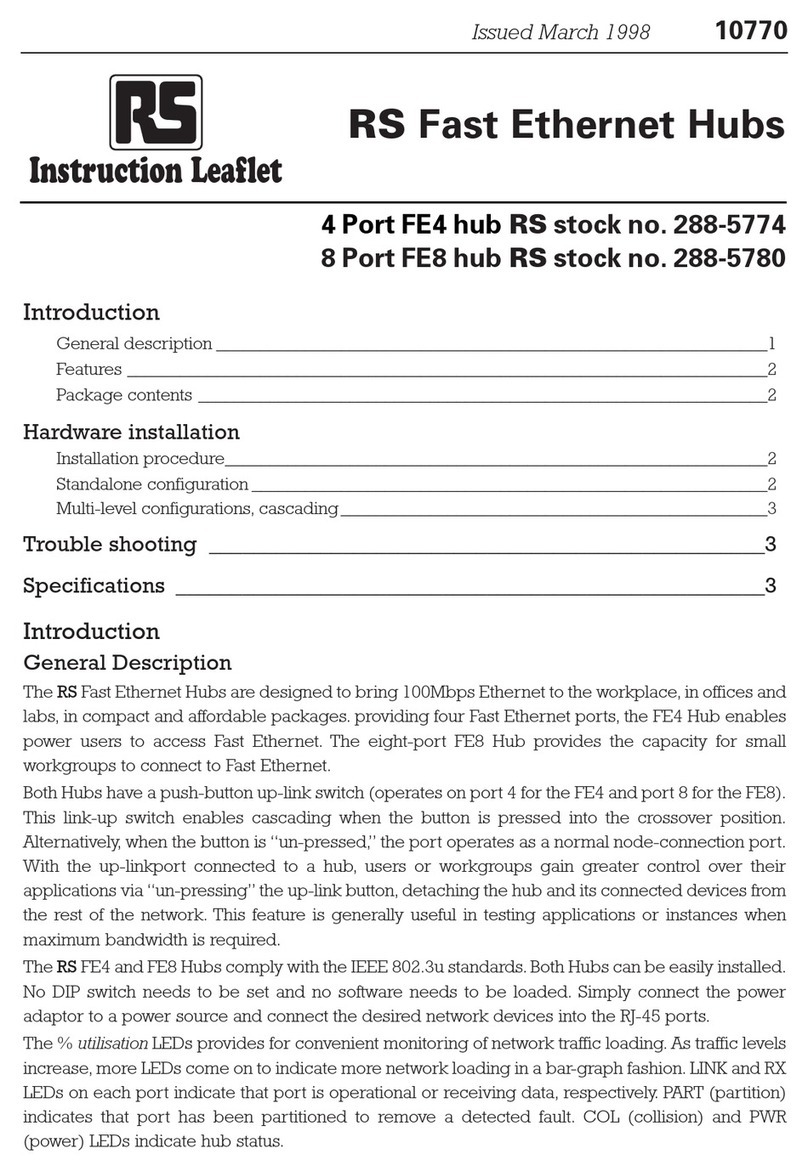3
Hub Ethernet 10BASE-T 303-2101
Introduzione
Hub adatto per unità PC Base. Può essere montato utilizzando uno slot
di espansione di riserva che consente l'accesso alle 5 porte RJ-45 sul
retro del PC. L'unità è dotata di un pannello LED diagnostico da
installare nel vano dell'unità 3.5" di riserva sulla parte anteriore del PC.
L'unità rappresenta una soluzione estremamente pratica e funzionale
per abitazioni, piccoli uffici, gruppi di lavoro e sale per conferenze o
seminari.
Caratteristiche
●Hub 10 Base-T con 5 porte modulari
●Conforme alle specifiche Ethernet IEEE802.3
●Può essere montato con facilità su qualsiasi unità PC Base
utilizzando lo slot di espansione di riserva
●Il pannello LED diagnostico può essere installato nell'alloggiamento
dell'unità 3,5" di riserva
●5 porte RJ-45 completamente schermate
●Porta uplink (porta 5) per espansione
●Partizione automatica
●Alimentato dal PC
●Ideale per ambienti SOHO, gruppi di lavoro di settore, sale per
conferenze e seminari
Descrizione dei componenti hardware
Figura 1 e Figura 2
Installazione dei componenti hardware
Prima dell'installazione
1. Spegnere e scollegare il cavo di alimentazione dal computer.
2. Scaricare l'elettricità statica dalle mani toccando il retro
dell'intelaiatura del computer.
(A) Hub interno
1. Rimuovere il coperchio del computer.
2. Scegliere uno slot di espansione vuoto e rimuovere il relativo
coperchio. Riporre le viti in modo da poterle utilizzare in seguito.
3. Inserire l'hub interno nello slot di espansione. Fissare saldamente
l'hub interno con la vite del coperchio dello slot.
4. Scegliere un connettore di alimentazione di riserva del computer
(per FDD da 3,5") e inserirlo nella presa di alimentazione dell'hub
interno.
(B) Modulo LED
1. Selezionare un alloggiamento da 3,5" di riserva e rimuovere il
relativo coperchio anteriore.
2. Inserire il modulo nell'alloggiamento. Allineare i fori delle viti del
modulo con quelli dell'alloggiamento. Fissare il modulo con una vite
su ciascun lato dell'alloggiamento da 3,5".
3. Collegare il modulo e l'hub interno utilizzando un cavo piatto a 14
piedini. Assicurarsi che il cavo rosso sia collegato alla presa del
modulo e dell'hub interno.
(C) Collegamento alle stazioni di lavoro
1. Collegare la stazione di lavoro a qualsivoglia porta RJ-45
disponibile sull'hub utilizzando un cavo UTP o STP.
2. Tutte le periferiche a nodo terminale devono trovarsi entro 100 metri
dell'hub collegato. Utilizzando l'hub in una configurazione
autonoma, è possibile collegare in rete fino a 4 stazioni di lavoro.
Connessione porte J-45
Indicatori LED
La RS Components non si assume alcuna responsabilità in merito a perdite di
qualsiasi natura (di qualunque causa e indipendentemente dal fatto che siano dovute
alla negligenza della RS Components), che possono risultare dall’uso delle
informazioni fornite nella documentazione tecnica.
LED Colore Indicazione
Alimentazione Verde Indicatore di potenza
Indicatore di interferenza
Interferenza Giallo Lampeggia per indicare
un’interferenza di rete
Non illumninto Nessuna attività
Collegamento Verde Porta RJ-45 collegata
RX Lampeggia per indicare
traffico in entrata
Partizione Rosso Porta RJ-45 partizionata
Porte RJ-45 Cavo UTP/STP Dispositivo con nodo terminale
Collegare a una stazione
Cablaggio diretto di lavoro o server
Port stazione Collegare a un altra porta
1-4 Daisychain dell’hub
Cablaggio a incrocio Collegare a un altra porta
isolato della stazione hub
Cablaggio diretto Collegare a un altra porta
della stazione hub
Collegare a una stazione
Daisy-chain Cablaggio a incrocio di lavoro o server
isolato Collegare a un altra porta
Daisychain dell’hub



























